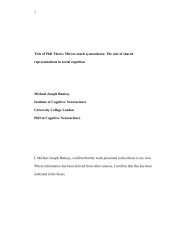Vyacheslav Ivanov and C.M. Bowra: a ... - UCL Discovery
Vyacheslav Ivanov and C.M. Bowra: a ... - UCL Discovery
Vyacheslav Ivanov and C.M. Bowra: a ... - UCL Discovery
You also want an ePaper? Increase the reach of your titles
YUMPU automatically turns print PDFs into web optimized ePapers that Google loves.
Zelinskii remained the classical scholar who could best underst<strong>and</strong> <strong>and</strong> comment<br />
on <strong>Ivanov</strong>’s path from pagan to Christian humanism. After the Revolution he settled in<br />
Warsaw, met up with <strong>Ivanov</strong> a few times in Italy, <strong>and</strong> kept up a busy correspondence<br />
with him; forty-two of his letters to <strong>Ivanov</strong>, written between 1924 <strong>and</strong> 1940, have<br />
survived <strong>and</strong> were recently published with an interesting introductory article by Elena<br />
Takho-Godi. As he observed in a letter to <strong>Ivanov</strong> of 1933, the main thrust of his<br />
scholarly work during this period was to prove his thesis ‘that the religion of classical<br />
antiquity is the true Old Testament of our Christianity’. 32 In this context he continued to<br />
extol <strong>Ivanov</strong>’s achievements as a pioneer of the Slavonic renaissance of classical<br />
antiquity. Parts of his original essay of 1916 were recycled in 1926 in his Polish <strong>and</strong><br />
Italian reviews of <strong>Ivanov</strong>’s study Dionis i pradionisiistvo (Dionysus <strong>and</strong> Pre-<br />
Dionysianism, 1923), <strong>and</strong> again in 1933 <strong>and</strong> 1934 in further essays on <strong>Ivanov</strong>, also<br />
published in Polish <strong>and</strong> Italian. 33 These articles played an important role in extending<br />
the Slavonic ideal of a classical revival into a wider European context. Despite some of<br />
the errors they contained, <strong>Ivanov</strong> clearly welcomed the continuing support of such a<br />
dedicated kindred spirit in emigration. On New Year’s Day in 1933 he wrote a second<br />
poem to Zelinskii, entitled ‘Drugu gumanistu’ (To a Humanist Friend), ending with the<br />
following stanza:<br />
Друг, наши две судьбы недаром<br />
Связует видимая нить:<br />
Мой дар с твоим широкосветлым даром<br />
Изволилось богам соединить,<br />
Дабы в юнейшем племени заветом<br />
32 Elena Takho-Godi, ‘“Dve sud’by nedarom svyazuet vidimaya nit’” (Pis’ma F.F. Zelinskogo k Vyach.<br />
<strong>Ivanov</strong>u)’, in Daniela Rizzi <strong>and</strong> Andrej Shishkin (eds.), Archivio italo-russo II (Salerno: Europa Orientalis:<br />
2002), 181-276 (239).<br />
28
















